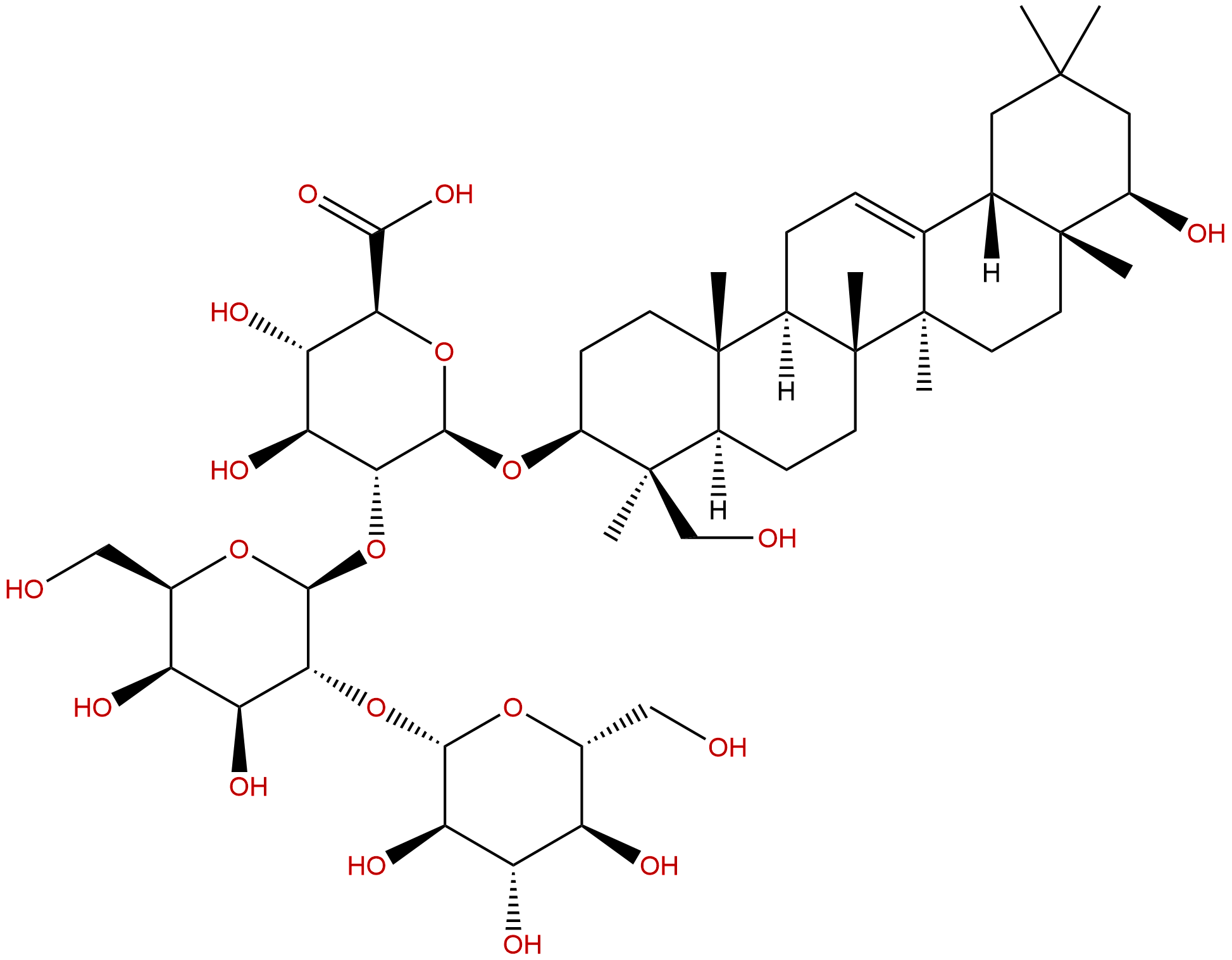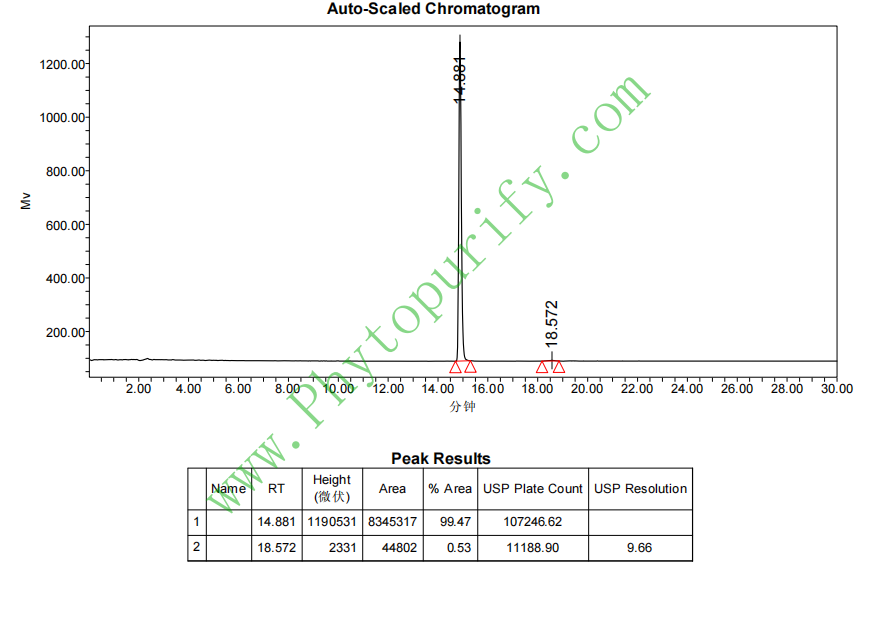
Soyasaponin BaCAS No.:114590-20-4
|
||||||||||
 |
|
|
||||||||

| Catalogue No.: | BP1331 |
| Formula: | C48H78O19 |
| Mol Weight: | 959.133 |
Product name: Soyasaponin Ba
Synonym name: Soyasaponin V
Catalogue No.: BP1331
Cas No.: 114590-20-4
Formula: C48H78O19
Mol Weight: 959.133
Botanical Source: Glycine max
Physical Description:
Type of Compound: Triterpenoids
Purity: 95%~99%
Analysis Method: HPLC-DAD or/and HPLC-ELSD
Identification Method: Mass, NMR
Packing: Brown vial or HDPE plastic bottle
Storage: Store in a well closed container, protected from air and light. Put into refrigerate or freeze for long term storage.
The product could be supplied from milligrams to grams
Inquire for bulk scale.
Description:
Soyasaponins(Aa, Ab, Af, Ba, Bb, and Bb') together with their derivatives may represent viable candidates for effective vaccine adjuvants due to their higher and lower or non-haemolytic effects.Soyasaponins Ab and Bb prevent scopolamine-induced memory impairment in mice without the inhibition of acetylcholinesterase.
References:
J.Agr.Food Chem., 2014, 62(9):2062-8.
Soyasaponins Ab and Bb prevent scopolamine-induced memory impairment in mice without the inhibition of acetylcholinesterase.
Soy (Glycine max, family Leguminosae), which contains isoflavones and saponins as main constituents, is known to exhibit memory-enhancing effects.
METHODS AND RESULTS:
Therefore, to investigate the role of soyasaponins in memory impairments, we isolated soyasaponin Ab (SA) and soyasaponin Bb (SB) from soybean and measured their protective effects against scopolamine-induced memory impairment in mice. SA and SB significantly prevented scopolamine-induced memory impairment in passive avoidance and Y-maze tasks. Compared to SA, SB rescued memory impairment more potently. Treatment with SB (10 mg/kg, p.o.) protected memory impairment in passive avoidance and Y-maze tasks to 97% (F = 68.10, P < 0.05) and 78% (F = 35.57, P < 0.05) of untreated normal control level, respectively. SA and SB (10 mg/kg) also rescued scopolamine-induced memory impairment in Morris water maze task (F = 14.51, P < 0.05). In addition, soyasaponins preserved brain-derived neurotrophic factor (BNDF) expression (F = 33.69, P < 0.05) and cAMP response element-binding (CREB) protein phosphorylation (F = 91.62, P < 0.05) in the hippocampus of scopolamine-treated mice. However, SA and SB did not inhibit acetylcholinesterase in vitro and ex vivo.
CONCLUSIONS:
On the basis of these findings, we suggest that soybean, particularly soyasaponins, may protect memory impairment by increasing BDNF expression and CREB phosphorylation.
HPLC of Soyasaponin Ba
